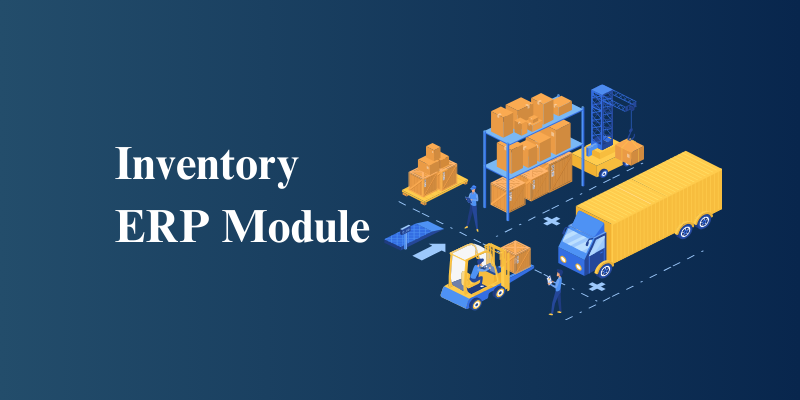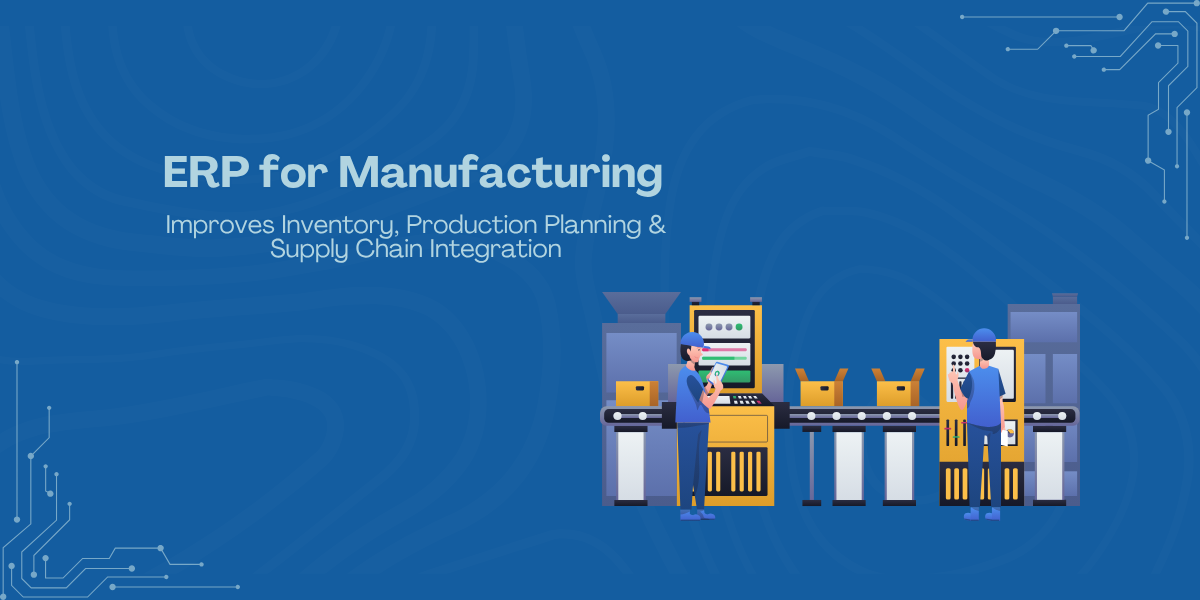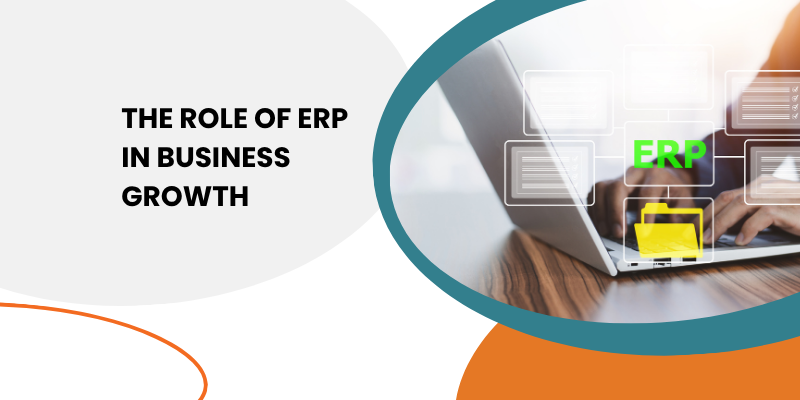Running a business today takes more than just selling a good product or service. Companies need the right tools to manage their work, especially when it comes to inventory. Without a proper system, they may face problems like stock mistakes, missed sales, having too much or too little stock, or delivery delays. That’s why having an Inventory ERP (Enterprise Resource Planning) module is so helpful.
An Inventory ERP module helps track stock levels, record stock movement, and manage how goods are stored and sent out. It’s useful for businesses of all sizes—not just big ones. When added to a full ERP system, it makes everyday tasks simpler, more accurate, and helps save time and money.
What Is an Inventory ERP Module?
An Inventory ERP module is a part of an ERP system that focuses on managing all tasks related to stock, storage, and supply chain activities. It connects inventory records with sales, purchasing, finance, and warehousing, offering complete control over the movement and levels of goods.
This tool replaces manual tracking methods like spreadsheets or paperwork. With real-time updates, businesses can see how much stock they have, where it is stored, and when they need to reorder. This reduces mistakes, saves time, and avoids stock outs or excess stock.
Why Businesses Need This Module
A business needs an Inventory ERP module for several important reasons:
- Better Stock Control
Managing stock manually can lead to over-ordering or running out of items. The module helps track items in real time, so businesses know exactly what’s available. - Saves Time and Labor
Instead of counting items or searching for stock records, the system does it automatically. Staff can focus on other tasks instead of doing repetitive work. - Reduces Costs
Avoiding extra stock, preventing losses from expired or damaged goods, and reducing unnecessary purchases—all help reduce spending. - Improves Customer Service
Customers get their orders on time because stock levels and deliveries are properly managed. This improves customer satisfaction and repeat sales.
Optimizes Warehouse Operations
It helps warehouse staff pick, pack, and ship products more efficiently. This speeds up order fulfillment.
Key Features of an Inventory ERP Module
Let’s take a closer look at the essential features offered in most inventory ERP modules
Inventory Level Tracking
Inventory level tracking is an essential feature for ensuring businesses maintain proper stock levels. This system continuously monitors the stock in real-time and provides alerts when the inventory levels are too high or too low. It prevents overstocking, which can tie up capital, or understocking, which can lead to missed sales opportunities. By maintaining a balanced inventory, businesses can reduce storage costs, avoid wastage, and ensure customer orders are fulfilled on time. This feature also helps forecast future demand based on sales trends, allowing businesses to make better purchasing decisions.
Warehouse Management
Warehouse management allows businesses to organize their inventory more effectively. It categorizes and tracks inventory by location, batch, or category, helping users quickly find items stored in different warehouses or locations. This organization ensures efficient storage, minimizes clutter, and streamlines the picking and packing process. The system also enables businesses to manage various aspects of warehouse operations, including stock replenishment and space optimization, reducing overhead costs and increasing operational efficiency.
Multi-Location Support
For businesses operating multiple warehouses or locations, this feature enables the central management of stock across all sites. It consolidates information into one system, allowing business owners and warehouse managers to monitor inventory levels, sales, and stock movements at different locations simultaneously. Multi-location support provides businesses with the flexibility to allocate resources, transfer stock between locations, and track inventory trends across the entire operation, thus enhancing their decision-making and improving stock management.
Barcode Scanning
Barcode scanning integrates directly with the ERP system, streamlining data entry and reducing manual errors. This is especially useful during the picking, packing, and shipping processes, as scanning barcodes speeds up transactions and ensures accuracy. This feature eliminates the need for manual stocktaking or product identification, reducing human errors like wrong items being shipped or incorrect quantities being recorded. Barcode scanning also improves inventory visibility and simplifies tracking and reporting.
Reorder Management
Reorder management automates the stock replenishment process by setting reorder points for products based on historical data and sales trends. When the stock reaches a predetermined threshold, the system sends alerts or automatically generates purchase orders to restock items. This ensures businesses never run out of stock and helps maintain a steady flow of products, reducing the risk of missed sales. Automatic reordering also optimizes stock levels and prevents over-purchasing, thus improving cash flow and warehouse efficiency.
Reporting and Analytics
Reporting and analytics provide businesses with valuable insights into their inventory and operations. These reports offer information on the performance of products, identifying fast-selling and slow-moving stock. The system can also analyze purchase history, helping businesses make informed purchasing decisions, negotiate better deals with suppliers, and forecast future demand. By having access to detailed reports, businesses can optimize inventory management, streamline supply chain operations, and make data-driven decisions to enhance profitability.
Returns and Damaged Stock Tracking
Returns and damaged stock tracking allow businesses to efficiently manage product returns and defective goods. This feature ensures that returned items are properly accounted for and removed from usable stock, preventing them from affecting inventory accuracy. It helps businesses maintain a clear view of stock levels and reduce the risk of selling damaged goods. Furthermore, by tracking returns, businesses can identify common product issues and take steps to improve quality or address customer concerns, enhancing the overall customer experience.
By incorporating these features into an ERP system, businesses can achieve a more organized, efficient, and transparent inventory management process. This not only ensures accurate stock control but also helps optimize supply chain operations, reduce costs, and improve customer satisfaction.
Code Agrius_Oreius ERP: Smart Inventory Management
The Code Agrius_Oreius ERP system is designed for businesses that want smarter, easier control over their IT and operational resources. Its Inventory Module is one of the core features, helping organizations simplify stock handling and improve overall business performance.
Here’s how it works in practice:
- Centralized Inventory Control: Whether a business has one or several warehouses, everything is tracked from a single dashboard.
- Real-Time Insights: Managers and staff can view accurate stock levels at any time, preventing surprises during order processing.
- Alternative Part Management:If a specific part or item is not available, the system can suggest a substitute that works in the same way. This helps avoid delays in production or delivery. It keeps the workflow running smoothly by showing alternative parts with the same function or fit. Businesses can continue their operations without waiting for the original part to restock.
- Customization: The system adapts to the business, not the other way around. Whether you’re dealing in electronics, manufacturing, or retail, the inventory workflows can be tailored to fit specific needs.
- Data Integration: The inventory module works hand-in-hand with other parts of the ERP—such as purchasing, sales, and finance. This creates a full picture of how inventory affects profit, cash flow, and customer service.
Conclusion
An Inventory ERP Module is no longer a luxury—it’s a basic tool that every growing business should consider. It removes guesswork from stock management and makes it easier to keep goods moving efficiently. When built into a system like Code Agrius_Oreius ERP, it can help reduce costs, improve service, and give business owners more control and visibility.
Whether you’re a small store or a multi-location company, having accurate, real-time stock information means fewer errors, faster order fulfillment, and better customer satisfaction. Code Agrius_Oreius ERP is a solid choice for businesses that want to stay organized and grow steadily without complications.
FAQs
What is the main purpose of an Inventory ERP Module?
It helps manage stock levels, warehouse operations, and product movement across locations, all from one system.
Can small businesses use an inventory ERP module?
Yes. It benefits businesses of all sizes by helping them stay organized and reduce stock-related errors.
How does it help in cost saving?
It prevents overstocking, reduces manual labor, avoids product waste, and improves purchasing accuracy.
What makes Code Agrius-Oreius ERP different from others?
It offers flexible features, real-time tracking, full integration with other business modules, and easy customization based on business needs.
Can it handle inventory across multiple warehouses?
Yes. It supports multi-location tracking, helping businesses manage stock across various locations without confusion.
Does it help with order fulfillment?
Absolutely. It speeds up picking, packing, and shipping, ensuring customers receive orders on time.







